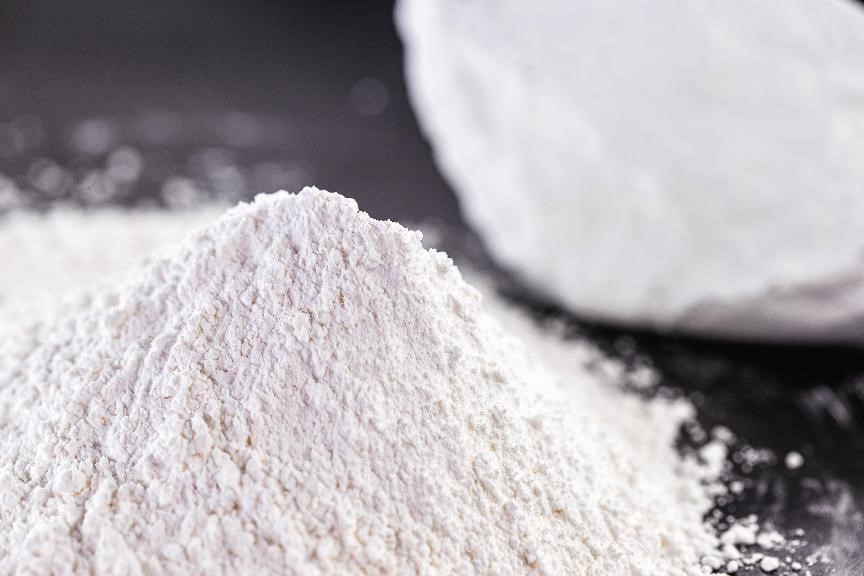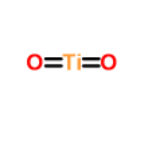


| Item | Index |
|---|---|
| Appearance | White powder |
| TiO2 content | ≥94.0% |
| Moisture | ≤0.8% |
| PH | 6.0-8.5 |
| Oil absorption | ≤22g/100g |
| Residue(45 μm) | ≤0.01% | Key features: |
1)Strong glossiness 2)Good hiding power, weather resistance, and dispersibility. |
| Recommended applications: | Mainly used for PVC piping, paper making, coatings, plastics, rubber, and master batches |
| Packing | In 25KG /500KG /1000KG bag or as per customer’s requirement |
|---|---|
| Storage | This product should not be stored outside or exposed to temperature extremes or to moisture.
To ensure optimum performance, it is recommended that the product is used on a first in, first out basis from receipt of shipment. |
Tel: 0086-25-52397808
E-mail: info@titanium-dioxide.net


| Common Names | TITANIUM DIOXIDE | ||
|---|---|---|---|
| Structure |

|
||
| CAS No. | 13463-67-7 | Boiling Point (℃) | 2900 |
| Molecular Weight | 79.866 | Melting Point (℃) | 1840 |
| Appearance | white powder | Bulk density | 3.84 |
| HS Code | 3206111000 | Flash Point (℃) | 2500-3000 |
| Safety Phrases | S2;S25;S26;S36;S36/S37 | ||
|---|---|---|---|
| RIDADR | No hazardous good according to the regulation. | ||
| WGK Germany | NONE | ||
| Packaging Group | NONE | ||
| Hazard Class | NONE | ||
| SYMPTOMS | PREVENTION | FIRST AID | |
| Inhalation | Cough. Sore throat. Redness. Burning sensation. Itching. | Use local exhaust or breathing protection. | Fresh air, rest. |
| Eyes | Redness. Pain. | Protective gloves. | Rinse opened eye for several minutes under running water. Then consult a doctor. |
| Ingestion | Abdominal pain. Nausea. Vomiting. | Do not eat, drink, or smoke during work. Wash hands before eating. | Rinse mouth. Induce vomiting (ONLY IN CONSCIOUS PERSONS!). Refer for medical attention . |
Titanium dioxide (TiO2) is a naturally occurring oxide of titanium and is one of the most widely used and versatile white pigments in the industry. It exists in different crystalline forms, the two most common being rutile and anatase. Here, we'll focus on Titanium Dioxide Rutile.
Rutile is one of the three naturally occurring mineral forms of titanium dioxide, the other two being anatase and brookite. The rutile form of titanium dioxide is characterized by its unique crystal structure, which gives it several advantageous properties for various applications:
1. Whiteness and opacity: Titanium dioxide rutile is an exceptional white pigment, providing high levels of whiteness and opacity. This makes it a preferred choice in applications where a bright white appearance is required, such as in paints, coatings, plastics, papers, and cosmetics.
2. UV resistance: Titanium dioxide rutile is an efficient UV absorber, making it suitable for use in sunscreen lotions and other sun protection products. It helps to block harmful UV rays from the sun and prevents them from reaching the skin.
3. Chemical stability: Rutile is more chemically stable than its counterpart, anatase, and this stability is beneficial in various applications. It can withstand exposure to harsh chemicals, making it suitable for use in coatings, plastics, and ceramics that require chemical resistance.
4. Durability and weather resistance: The stability of titanium dioxide rutile also extends to its resistance to weathering and degradation caused by exposure to sunlight, moisture, and other environmental factors. It helps maintain the appearance of products for extended periods, especially when used in outdoor applications.
5. High refractive index: Rutile has a relatively high refractive index, which means it can effectively scatter light, contributing to its opacity and brightness in pigmented products like paints and coatings.
Applications of Titanium Dioxide Rutile include:
- Paints and coatings: Used as a pigment to provide whiteness, opacity, and durability.
- Plastics: Incorporated to enhance the appearance and UV resistance of plastic products.
- Paper: Used as a filler and coating pigment to improve whiteness and printability.
- Cosmetics and personal care products: Found in sunscreen lotions and other beauty products for UV protection.
- Ceramics: Used for its chemical stability and ability to enhance the appearance of ceramics.